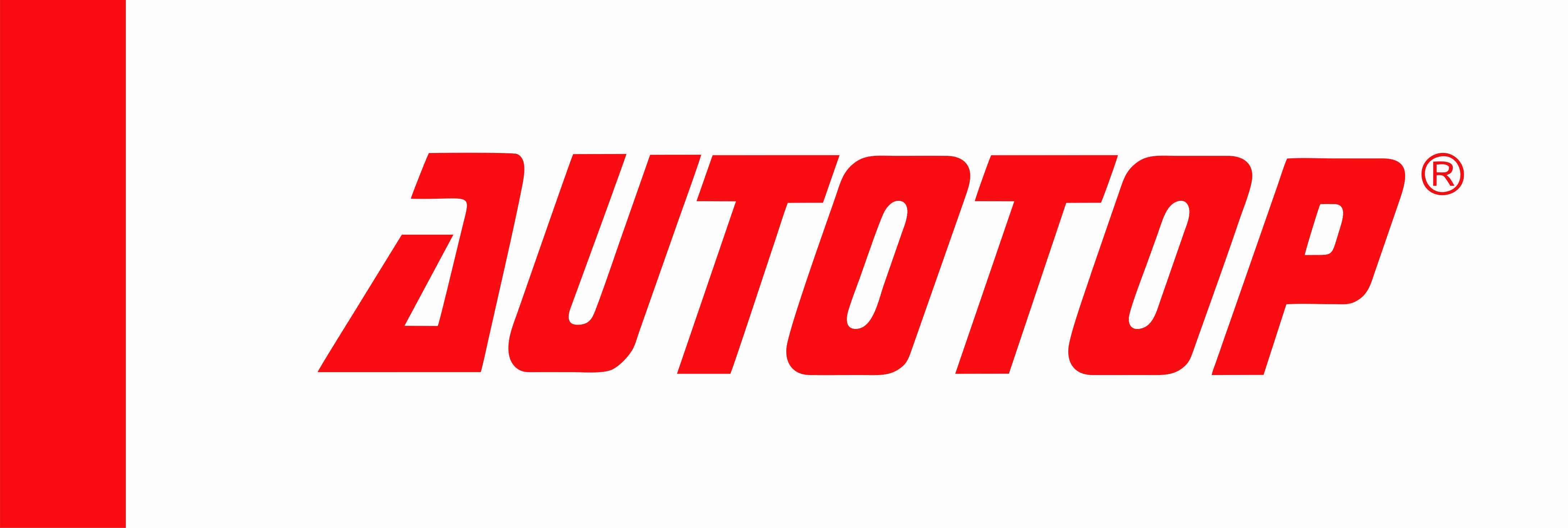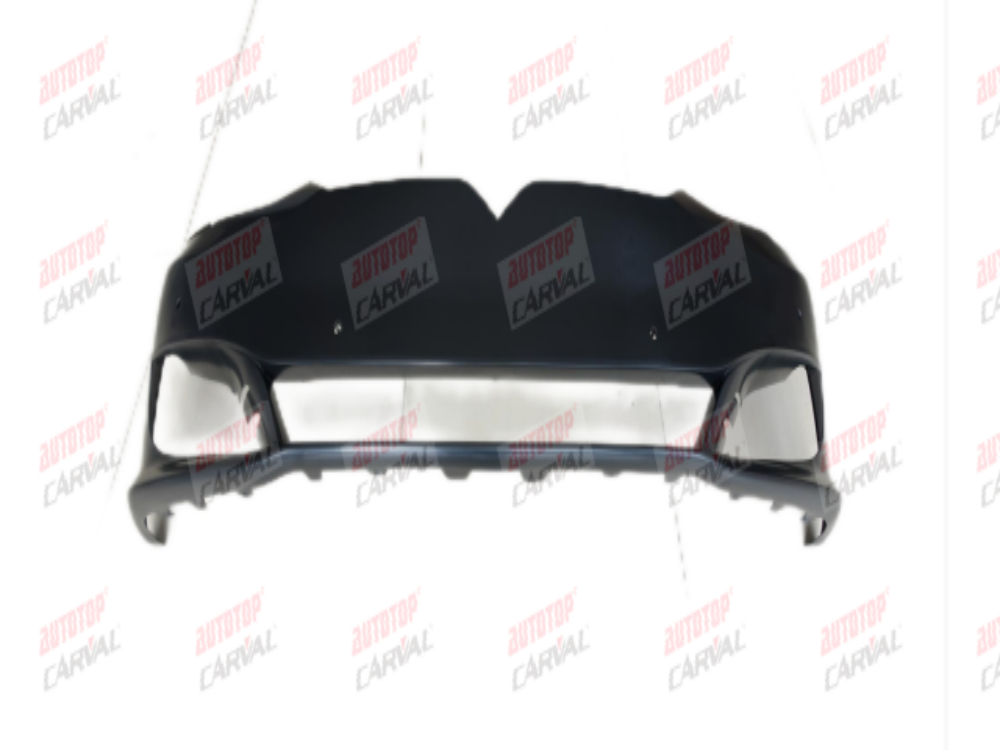Ძირითადი დიზაინური პრინციპები სამოდერნო მანქანების გრილებისთვის
Ესტეტიკისა და აეროდინამიკური ფუნქციონალის შესაბამისი ბალანსი
Წინა გრილი მანქანის მხოლოდ ესთეტიკურ საშუალებას არ წარმოადგენს, იგი ასევე გავლენას ახდენს საწვავის ეფექტუანი გამოყენების ეფექტურობაზე. ასეთი გრილები ხელს უწყობს მანქანის გარშემო ჰაერის ნაკადის მართვაში, რაც შეამცირებს ენერგიის დანახარჯ მომტან წინაღობას. ავტომობილების ლაბორატორიების კვლევები აჩვენებს, რომ სწორად დაპროექტებული გრილები შეიძლება წინაღობა 15%-ით შეამციროს, რაც დროის განმავლობაში საწვავის გადასახადების შემნიშვნელად შემცირებას ნიშნავს. უმეტესი ავტომობილის დიდი მწარმოებლები გატარებენ ათასობით საათს სხვადასხვა გრილის ფორმების გასამტესტად ქარის სადინრებში სანამ დაასრულებენ მათ დიზაინს. მაგალითად, BMW-ის ინჟინრებმა ბოლოდ შეცვალეს მათი თირკმელის ფორმის გრილის ფორმა გაგრილების გასაუმჯობესებლად ბრენდის ამოცნობადობის შენარჩუნებით. ასეთი დეტალური ინჟინერიის სამუშაო საშუალებას იძლევა დღევანდელი ავტომობილების მიაღწიონ უკეთეს საწვავის ეკონომიას გარეშე სტილის დანახარჯი, რაც მომხმარებლებს სჯობს ახალი მოდელების შესაძენად.
Მასალების არჩევანი: დაჭერის მიერ სტილი
Როდესაც ავტომობილის გრილისთვის მასალებს ირჩევენ, მძღოლებმა უნდა გააზრონ მისი მარიცხვის ხარისხი და გარეგნობა. უმეტესი მწარმოებელი ირჩევს ABS პლასტმასას, ალუმინს ან ნახშირბადის გარეშე მარილშემაჩერ ფოლადს, რომლებიც თითოეული სხვადასხვა მნიშვნელობას წარმოადგენს. ABS პლასტმასა გამძლეობით და მსუბუქობით გამოირჩევა, რაც ახსნის იმას, თუ რატომ იყენებენ მას ბევრი მომხმარებელი მიუხედავად იმისა, რომ ის არ მოითხოვს პრემიუმ სახეობას. მეორე მხრივ, მარილშემაჩერი ფოლადის და ალუმინის გრილები უფრო მარივ იხილებიან და უკეთ გამძლე არიან არასასიამოვნო პირობების მიმართ, მიუხედავად იმისა, რომ ისინი მანქანის წონას ამატებენ. მწარმოებლები უწონასწორობენ მსუბუქობასა და სიმტკიცეს შორის. შეხედეთ ახალ BMW-ებს ან Lexus-ებს და მათი გრილები გვეუბნებიან იმაზე, თუ რა არის მნიშვნელოვანი სხვადასხვა მომხმარებელთა ჯგუფებისთვის. საბოლოოდ, ასეთი მასალების არჩევანი განსაზღვრავს არა მარტო მანქანის გარეგნობას, არამედ მის გამძლეობას წელზე განკუთვნილი ყველა ამინდის პირობებში.
Საფაბრიკო სათანადოება VS პერსონალიზებული შემადგენელი
Როდესაც ქარხნულად დამზადებული გრილების შედარებას ვასრულებთ ინდივიდუალურ გრილებთან, აუცილებლად არსებობს რამდენიმე კომპრომისი, რომელზეც ღირს ფიქრი. ქარხნული ვარიანტები უმეტესად უკეთ ემთხვევა მანქანებს, რომლებზეც ისინი დამონტაჟებულია, შეინარჩუნებს თავდაპირველ გარეგნობას და ასევე აკმაყოფილებს მწარმოებლის მიერ განსაზღვრულ სპეციფიკაციებს მათი მუშაობის შესახებ. ინდივიდუალური გრილები კი საშუალებას აძლევს ადამიანებს გამოავლინონ თავისი პიროვნება, ხანდახან ისეთი გამოჩენით შეიძინონ მანქანები, რომლებიც ქუჩაზე ყურის მიიპყრობს. ბოლო გამოკვლევები აჩვენებს, რომ ამ დროს მძღოლების უმეტესობა სურს თავისი მანქანის პერსონალიზება, სავარაუდოდ იმიტომ, რომ ყველას სურს რაღაც განსხვავებული იმაზე, რაც პირდაპირ დილერის ავტომანქანების გაყიდვის მოედანიდან მოდის. გრილის არჩევისას ყველაზე მნიშვნელოვანია მისი დაყენების ადვილება და იმის დადგენა, რომ მანქანის დანარჩენ ნაწილთან ერთად მართლაც კარგად გამოიყურება. უმეტესობა საბოლოოდ პოულობს საშუალო გზას, სადაც მანქანა კარგად მუშაობს, მაგრამ ასევე ასახავს მის სტილის გარკვეულ გემოვნებას.
Გამოჩნდენილი გრილის სტილები გამარჯვებული წინაპირი მოგებისთვის
Ქურთილის გრილები: ტრეკისთვის მზად პერფორმანსი
Როდესაც ადამიანები ფიქრობენ სწრაფი მანქანების შესახებ, პირველ რიგში მათ გახსოვს უჯრედული გრილები. ექვსკუთხა ნიმუში აძლევს ამ გრილებს იმ ამაღლებულ სახეს, რომელიც ბევრის მიერ ასოცირდება წარმადობის მანქანებთან. მაგრამ მხოლოდ კარგად გამოიყურება არ არის, ამ დიზაინებს ნამდვილად ეხმარებათ მიეცეს საწვავის საშენ სივრცეში საჰაერო ნაკადის მიმართულებას. მეტი ჰაერის ნაკადი ნიშნავს, რომ ძრავები უფრო ეფექტურად მუშაობს, რაც ახსნის, რატომ არიან სპორტული მანქანების მოყვარულების მიერ მათ მიმართული მიდრეკილება. მანქანის დიზაინერები ხშირად ახსენებენ, თუ როგორ ურთიერთობენ უჯრედული გრილები ფორმისა და ფუნქციის შორის. ისინი უზრუნველყოფენ წინა ბოლოს ვიზუალურად ამაღლებას, მაშინაც კი, როდესაც ქრომისა და ბზინვარის ქვეშ მდებარეობს პრაქტიკული მიზნით.
Billet Grilles: მუსკულოზური პოზიცია კამიონებისა და SUV-ებისთვის
Ბილეტის გრილები გამძლე და გრძელმასვლელი დამზადებით გამოირჩევა. საერთოდ ისინი მყარი მეტალის ღონეებისგან შედგება, რომლებიც ჰორიზონტალურად ან ვერტიკალურად წინა ბამპერის არეზეა განლაგებული. ასეთი სახის გრილები ბოლო დროს პიკაპებზე და სპორტულ სატვირთო ავტომობილებზე საკმაოდ გავრცელებული გახდა. ეს გარეგნობა მანქანებს აგრესიულ და ქარხნულ სახეს უმატებს, რაც მათ მიერ უკავშირდება ოფროდულ შესაძლებლობებს. ავტომობილის აქსესუარების ბაზარზე ამჟამად ბილეტის გრილების მიმართ ინტერესის ზრდა მოხდა. ხალხი სურს რაღაც ლამაზი და ელეგანტური გამოჩნდეს, მაგრამ ასევე რომ ხილულად მასიული და შესახებ იყოს. ბევრი მძღოლის მიერ დაყენებული გრილების შესახებ მოხსენიებები ამტკიცებს, რომ მათი მანქანების გარეგნობა სრულიად შეიცვალა მოდერნიზაციის შემდეგ. წინა ნაწილი სრულიად ახალი ხასიათით გამოირჩევა, რაც მაქსიმალურ ყურადღებას იწვევს შუქნიშნებთან დაყენებისას.
Ქსელის გრილები: სლეკ ვერსატილობა ავტომობილების ტიპებში
Ამ დღეებში მარხილის გრილები საკმაოდ პოპულარული გახდა სხვადასხვა სახის სატრანსპორტო საშუალებებში, მიუხედავად იმისა, არის თუ არა ის მაღალკლასოვანი მოდელები თუ ჩვეულებრივი ოჯახური სედანები. რაც განსაკუთრებით გამოიყურება, არის მათი მოხატული გამოსახულება, რაც აძლევს მანქანებს სტილურ და განსაკუთრებულ ხასიათს, ამასთან უზრუნველყოფს ძრავის გაგრილებას უკეთ ვიდრე ზოგიერთი სხვა გრილის დიზაინი. მომხმარებლებს უყვართ ის ფაქტი, რომ ეს გრილები შესაძლოა შესაფერისი იყოს თითქმის ნებისმიერი ავტომობილის სტილთან ერთად გამოყენებისას. ავტომობილების დიზაინერები ხშირად აღნიშნავენ, რომ მარხილის ნახაზები საშუალებას აძლევს ჰაერის გატარებას გაცილებით უკეთესად, რაც ნიშნავს წარმადობის გაუმჯობესებას ელეგანტური გამოსახულების გვერდით. უმეტესობა მძღოლებისა, რომლებიც ეძებენ იმას, რაც კარგად მუშაობს და ამასთან კარგად გამოიყურება მათ მანქანაზე, მარხილის გრილებს უპირატესობას აძლევს ფორმისა და ფუნქციის გამართული ბალანსის დროს.
Სამოდერნო გრილის ტენდენციები მანქანის წინა ნაწილში
LED აქსენტირებული გამოსვეტება მომავალის ბრენდის იდენტიფიკაცია
Ავტომობილების კომპანიები ამ აზრს უკვე გადაიტანენ ახალ დონეზე, გრილებში ჩაშენებული LED სამუშაო ნათურებით. ეს მცირე ნათურები ხელს უწყობს მომხმარებლებს განასხვავონ სხვადასხვა ბრენდები და გააუმჯობესონ ავტომობილების ზოგადი გამოიგანება. უმეტესი მთავარი მწარმოებლების მიერ გამოყენებულია ეს ტექნიკა, რითაც გახდა LED განათება მნიშვნელოვანი ნაწილი იმისა, რით განირჩევა მათი ავტომობილები გზის მოძრაობის დროს სხვებისგან. მაგალითად, Audi და BMW მათ წინა ბამპერებში მოწყობილი აქვთ ასეთი ნათურები. შედეგად, ავტომობილები გამოიყურებიან სუპერ მშვენიერად, მაგრამ ასევე უფრო უსაფრთხოა ღამით მძღოლობა, ვინაიდან მძღოლები შეძლებენ მათ შორიდან დანახვას. და მოდით ვის უნდა თავისი ავტომობილი მომსახურეობის მსგავსად გამოიყურებოდეს, როდესაც ვინმეს შეხვდებით? ზუსტად ამიტომ არის ამ ტექნოლოგიური ტრენდის მიმდევარი იმდენი ავტომობილის მწარმოებელი.

Კარბონ-ფიბრის დაფარვებები წონის შენახვისთვის პრესტიჟის გამოსახმავად
Ავტომობილების ინდუსტრია ამ დღეებში უყვარს ნახშირბადის ბოჭკოვანი მასალის გამოყენება, რადგან ის შეამსუბლებს წონას და ამავდროულად იძლევა პრემიუმ გარეგნობას, რომელიც მძღოლების უმეტესობას სურს. ეს მასალა საოცარ სიმაგრეს გამოიჩენს და მიუხედავად ამისა, მისი წონა მცირეა, რაც ამ მასალას აქცევს სპორტული ავტომობილების და სხვა მანქანებისთვის პოპულარულ არჩევანად, სადაც რამდენიმე ფუნტის შემსუბლებამ შეიძლება მნიშვნელოვანი განსხვავება შეიტანოს. ასევე ვხედავთ, რომ სხვა ბრენდებიც უფრო მეტად გადადიან ნახშირბადის გამოყენებაზე, ინტეგრირებულია ყველაფერში, რიგით გარემოს დაწყებული სპოილერებით დამთავრებული. კომპანიები მხოლოდ გარეგნობის მიხედვით არ ირჩევენ ამ მასალას – მასში ნამდვილად არსებობს ღირებულება მანქანების მსუბუქების მნიშვნელობის გამო. ჟურნალები, როგორიცაა Automobile, ასევე აწერიან, რომ ნახშირბადის მასალა ამაღლებს მანქანის მუშაობის ხარისხს და საწვავის დაზოგვასაც უზრუნველყოფს, ხოლო ამასთან ინარჩუნებს იმ გლუვ გარეგნობას, რომელიც მომხმარებლებს სურთ.
Საფერის მორგები: მუდმივი ფაბრიკური ინტეგრაცია
Ავტომობილების დამზადებელი კომპანიები უფრო მეტად აირჩევენ საღებავ გარშემორტყმულ დეტალებს, რათა მთელი ავტომობილის კურთხა ერთიანი და მთლიანი სახე შეექმნას, ვიდრე ცალკეული ნაწილებისგან შედგენილი. ხალხი განსაკუთრებით ამჩნევს ავტომობილს, როდესაც ის სრულყოფილად არის დამზადებული და განსხვავებული ნაწილები არ აშლებს მის სახეს. სწორი ფერების შერჩევა მოქმედებს მყიდველის აზრზე და გავლენას ახდენს მის ყიდვის გადაწყვეტილებაზე. მაგალითად, Volkswagen-მა ასეთი მიდგომა წელზე უკვე დაამკვიდრა თავისი მოდელების უმეტესობაში. Lexus-იც ამ პრინციპს მიჰყვება და თითოეული მოდელისთვის სპეციალურად უფრო სათანადო ფერთა პალიტრას უმაგრებს. ორივე კომპანიამ შენიშნა, რომ მომხმარებელი უფრო დაკმაყოფილდა იმ ავტომობილით, რომელიც ნებისმიერი კუთხიდან საუკეთესოდ გამოიყურებოდა.
Მანქანისთვის სწორი გრილის არჩევა
Გრილის დიზაინის ერთმანეთს ერთიანი ჩართვა სხეულის კონტურებთან
Არა მხოლოდ სტილის პრეფერენციების გათვალისწინება მნიშვნელოვანია მანქანისთვის სწორი გრილის არჩევისას. გრილი უნდა იმუშაოს მანქანის ყველა კუთხიდან გამოყურებასთან ერთად. კარგად დიზაინირებული გრილები საიდან იმართლებს მანქანების გარეგნობას, რადგან ისინი ქმნიან გლუვ გადასვლას სხეულის სხვადასხვა ნაწილს შორის. მიიღეთ სპორტული მანქანების მაგალითად. მათი გრილები ხშირად მიჰყვება ამ მკვეთრ, გამართულ ხაზებს, რომლებიც აძლევენ მათ აგრესიულ გარეგნობას. მეორე მხრივ, რამე მსგავსი SUV-ის სარგებლობს გრილისგან, რომელიც უფრო ძლიერ გარეგნობას აძლევს მის მყარ აშენებას. ავტომობილების დიზაინერების უმეტესობა ეთანხმება, რომ გრილი არ უნდა დომინირებდეს მანქანის სახეზე, არამედ უნდა გამოყოფდეს იმ განსაკუთრებულობას, რაც თითოეულ მოდელს უნიკალურად აქცევს. მაგალითად, Ford Mustang-ის შემხედვარება ზუსტად აჩვენებს, რატომ არის ეს მნიშვნელოვანი. იმ დიდი წინა გრილი არა მხოლოდ კარგად გამოიყურება, არამედ განსაზღვრავს იმას, თუ რატომ არის Mustang ამერიკული გზების სახელმწიფო სიმბოლო.
Განახლების განვითარება ყოველდღიური მანქანებისა და შოუ-მანქანებისთვის
Როდესაც გრილებზე ვლაპარაკობთ, არსებითად განსხვავდება ის, რისი საჭიროებას ახდენენ ხალხი თავისი ყოველდღიური გადაადგილებისთვის ჩვეულებრივი მანქანებისთვის და იმ მანქანებისთვის, რომლებსაც ისინი შაბათ-კვირას ანათლებენ. უმეტესობა იმ ადამიანებისა, ვინც ყოველდღიურად იმართებს მანქანით, უფრო მეტად აფასებს გრილებს, რომლებიც გაძლებენ მტვრის, ქვიშის და ზამთრის მარილის წინააღმდეგ და არ განულებს მათ. ისინი ხიბლავენ გრილებს, რომლებიც გაუძლებენ ყოველდღიურ ტრანსპორტში არსებულ გამოწვევებს. მანქანების გამოსაფენად გამოყენებულ გრილებზე კი სხვაგვარად მიდიან. ისინი უფრო მეტად ყურადღებას აქცევენ გარეგნობას, ზოგჯერ ხარჯავენ ათასობით დანახარჯებს საჩუქრებზე ან განათებულ გრილებზე, რომლებიც მათ მანქანებს ავტომანქანების გამოფენებზე განსაკუთრებულს ხდის. ზოგიერთი ინდუსტრიული ანგარიშის მიხედვით, მანქანის მფლობელების დაახლოებით 60% პრაქტიკულ ნივთებს უპირატესობას ანიჭებს ვიზუალურად მომწიფებულ დამატებებს. მაგრამ მოდით იმასაც აღვნიშნოთ, რომ ყველას სურს კარგად გამოიყურებოდეს. მარაგის გრილები კი საუკეთესოდ გამოდგება ყოველდღიური მართვისთვის, რადგან ისინი კარგად გამოიყურებიან და არ გადაახარჯებენ ბიუჯეტს. მაგრამ თუ ვინმე სურს, რომ მისი მანქანა შემდეგ ავტოგამოფენაზე ყურადღება მიიპყროს, მაშინ განსაკუთრებული დიზაინი ან საინტერესო სინათლეები აუცილებლად დაამატებს იმ სპეციალურ რამეს, რასაც არავინ დაივიწყებს.
Ამინდის წამართვა და გრძელი პერიოდის მართვა
Ქანდაკების დიზაინის შესაბამისად ამაღლებული ამინდის მასალების გამძლეობა მნიშვნელოვან როლს თამაშობს, რადგან ის პირდაპირ ახდენს ზემოქმედებას ქანდაკის სიგრძეზე და მის სიმტკიცეზე. წვიმი, თოვლი, სანაპირო ზონებიდან მომდინარე მარილიანი ჰაერი ერთად ქმნიან გარდაქმნის პრობლემებს და სხვა სახის ზიანს, რაც ნელ-ნელა ახდენს ზემოქმედებას როგორც ქანდაკის გარეგნულ სახეობაზე, ასევე მის სწორ მუშაობაზე. ბაზარზე არსებული უმეტესობა მაღალხარისხიანი ქანდაკები სინამდვილეში იყენებს გარდაქმნისადმი მდგრად მასალებს, როგორიცაა ნახშირბადის გარეშე დამზადებული ფოლადის ვარიანტები ან მძიმე პლასტმასები, როგორიცაა ABS, რომლებიც უმჯობესად გამძლე არიან ამინდის უხეშ პირობების მიმართ. მათი განმარტვა ხშირად და დამცავი საფარის გამოყენება მნიშვნელოვნად უწყობს ხელს ქანდაკების საუკეთესო გარეგნული სახის შენარჩუნებაში წელზე მეტი ხნის განმავლობაში. იმ ადამიანების მოსაზრებები, რომლებმაც ასეთი ქანდაკები დაამონტაჟეს, მიუთითებს ნაკლებ პრობლემაზე, როგორიცაა კოროზიის ლაქები ან ფერის გამოვარდნა, როდესაც ისინი არჩევანს აკეთებენ ამ მდგრადი მასალებისგან დამზადებული პროდუქტებზე პრობლემების მოგვიანებით გადაჭრის მცდელობის ნაცვლად.
Მანადილის წინა გრილის განახლების სასიდის მონაკვეთები
Ინდივიდუალური სტილიზაცია სტოკის კონფიგურაციების გარეშე
Ქარხნული გრილის მაგივრ პირადი გრილის მოწყობა მანქანის გარეგნულის არსებით გადაქმნის. მანქანების მოყვარულები ხშირად ამბობენ, რომ ასეთი პირადი ელემენტები მათ მანქანებს აძლევს განსაკუთრებულ ხასიათს, რაც გამოირჩევა ქალაქში მანქანით მგზავრობისას. ბოლო კვლევების მიხედვით, იმ ადამიანების ათიდან შვიდი პროცენტი, რომლებიც მანქანის შეძენის შემდეგ მისი სტილის მორგებით არიან დაკავებული, მნიშვნელოვნად უფრო მაღალად აფასებენ მანქანის გარეგნულს ცვლილებების შემდეგ. მაგალითად, ჯონ დოუ ტეხასიდან გააკეთა თავისი ძველი გრილის ჩანაცვლება უფრო სასიკვდილო დიზაინით და ახლა სრულიად მოწონებულია მისი მანქანის აგრესიული და განსხვავებული გარეგნულით. ახალი გრილი უფრო კარგად ემთხვევა მისი მანქანის იმ იდეას, რომელიც მას წარმოადგენს, და სინამდვილეში, ახლა ვერავინ გადის მის მანქანას უყურადღებოდ.
Გაუმჯობესებული მოტორის გამზირის ეფექტივობა
Სწორი გრილის დიზაინი მნიშვნელოვნად განსხვავდება იმის მიხედვით, თუ როგორ ინარჩუნებს ძრავა გაგრილებას, რაც პირდაპირ აისახება მანქანის მთლიან წარმოებით შესრულებაზე. კვლევები აჩვენებს, რომ გრილის სწორად დაპროექტებული ვერსიები უზრუნველყოფს ჰაერის უკეთ გადინებას ძრავის comparტმენტში, რაც აუცილებელია ძრავის ზედმეტად გახურების თავიდან ასაცილებლად. სპორტული ან მუსკულური მანქანებისთვის, რომლებიც ხშირად აწვდიან საზღვრებს თავიანთი ძალის, სითბოს მართვა განსაკუთრებით მნიშვნელოვანია გრძელი მოგზაურობების ან ტრასის დღეების დროს. გრილის განახლებაზე დახარჯული ადამიანები ხშირად ახასიათებენ უფრო ხანგრძლივ მომუშაობას ძრავების, ასევე ზოგჯერ საწვავის ეკონომიას. ხარისხიანი გრილის შეძენაზე დახარჯული თანხა უკვე არ არის მხოლოდ გარეგნობის საკითხი, ეს გადაწყვეტილება გამართლებულია როგორც წარმოების მხრივ, ასევე შემდგომი მომსახურების ხარჯების კუთხით.
Ზრდის მნიშვნელოვანი გაზრდა ერთმანეთად განსაკუთრებული გარე დიზაინის მიერ
Გარეგნულად ლამაზი ავტომობილები ხიბლს უფრო ხანგრძლივად ინარჩუნებენ, განსაკუთრებით კი მაშინ, როდესაც გრილის ახალი დიზაინი აქვთ. ბაზარზე ამჟამად რა მდგომარეობაა, იმაზე დაკვირვებით ჩანს, რომ იმ ავტომობილებს, რომლებზეც გამოხატულია ახალი სტილის ელემენტები, მაგალითად, მიმზიდველი წინა გრილები, ყიდვების დროს ყურადღება უფრო სწრაფად იზიდავს. ზოგიერთი კვლევის მიხედვით, ასეთი გაუმჯობესება რეალურად შესაძლოა გაზარდოს რეალიზაციის ფასები დაახლოებით 10 პროცენტით. იმ ადამიანებმა, რომლებიც მეორად გამოყენებული ავტომობილების შესაძენად მიდიან, პირველ რიგში ამ ვიზუალურ გაუმჯობესებებს ამჩნევენ და ბევრი მათგანი აფასებს იმას, რომ მიიღოს რაღაც ლამაზი და მაინც კარგად მოქმედებს. ვისაც გაყიდვა შესაძლოა მომდევნო დროს მოუწიოს ავტომობილის, გრილის შეცვლასთან დაკავშირებული ხარჯები დიდ ხანგრძლივობას შეიძლება მოუტანოს სარგებელი.
Ხელიკრული
Რატომ არის მნიშვნელოვანი ქაღალდის დიზაინი მანქანებისთვის?
Ქაღალდის დიზაინი ასახავს გარემოს და აეროდინამიკური ფუნქციონალობის გარკვეულ ბალანსს, რაც გავლენას ახდენს სასურველზე და მანქანის მუშაობაზე.
Რა მასალები ხვალ გამოიყენება მანქანის ქაღალდებისთვის?
Ხვალ გამოიყენება ABS პლასტმასა, ალუმინი და რკინაკის მასალა, რომელთაგან თითოეული არის უნიკალური წონის, გამძლევადობისა და გარემოს მსგავსებით.
Როგორ შეიძლება მანქანის ქაღალდის განახლება გავლენას ახდენოს მეორე ხელის ღირებულებაზე?
Გრილის გაუმჯობესება ავტომობილის გარეგნული ხიბლის გაზრდას უწყობს ხელს, რაც მისი რეალიზაციის ღირებულების გაზრდას უწყობს ხელს პოტენციური მყიდველების მიმართულებით.
Რა არის LED აქსენტური საშუქის გამოყენების მონაკვეთები ქსოვილის დიზაინში?
LED აქსენტური საშუქი გამარტივებს ბრენდის იდენტიფიკაციას და ხედავადობას, გაუმჯობეს საurançaს ნაკლები სინათლეში და პროექტირებს მოდერნულ და ინოვაციურ მართვას.
Რა უნდა განიხილეთ ქსოვილის დიზაინში ყოველდღიურ მაशინებში წინააღმდეგად შოუ-მაशინებს?
Ყოველდღიურ მაशინებს ხშირად სჭირდება მდებარე და პრაქტიკული ქსოვილები, ხოლო შოუ-მაშინები პრიორიტეტს აძლევენ უნიკალურ და სტილურ დიზაინებს, რომ გამოხატოს პირადი სmoid.
Შინაარსის ცხრილი
- Ძირითადი დიზაინური პრინციპები სამოდერნო მანქანების გრილებისთვის
- Გამოჩნდენილი გრილის სტილები გამარჯვებული წინაპირი მოგებისთვის
- Სამოდერნო გრილის ტენდენციები მანქანის წინა ნაწილში
- Მანქანისთვის სწორი გრილის არჩევა
- Მანადილის წინა გრილის განახლების სასიდის მონაკვეთები
-
Ხელიკრული
- Რატომ არის მნიშვნელოვანი ქაღალდის დიზაინი მანქანებისთვის?
- Რა მასალები ხვალ გამოიყენება მანქანის ქაღალდებისთვის?
- Როგორ შეიძლება მანქანის ქაღალდის განახლება გავლენას ახდენოს მეორე ხელის ღირებულებაზე?
- Რა არის LED აქსენტური საშუქის გამოყენების მონაკვეთები ქსოვილის დიზაინში?
- Რა უნდა განიხილეთ ქსოვილის დიზაინში ყოველდღიურ მაशინებში წინააღმდეგად შოუ-მაशინებს?


